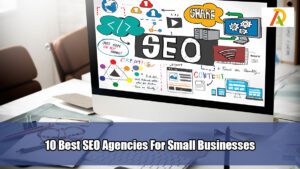6 Unique Advertising Topics for Presentation

You have been asked to give a presentation on advertising to your company’s marketing department. To make sure that your presentation is successful, you will need to choose an advertising topic that is both interesting and informative. This article provides a list of potential topics for your advertisement presentation, as well as some tips on how to choose the best one for your needs.
Traditional Advertising
Several traditional advertising topics can be used for presentations. These include print, television, radio, and outdoor advertising. Each of these topics can be further divided into sub-topics, such as the different types of print ads (e.g., magazine ads, newspaper ads, etc.), the different types of TV ads (e.g., commercial spots, infomercials, etc.), and the different types of radio ads (e.g., spot commercials, public service announcements, etc.).
Social Media Advertising
Are you looking for some advertising topics for your presentation? Well, look no further than social media advertising. Social media platforms like Facebook, Twitter, and LinkedIn offer businesses a great way to reach out to potential customers. And best of all, it’s relatively inexpensive to do.
When it comes to social media advertising, there are a few things you need to keep in mind:
- You must ensure that your ads target the right audience.
- You must ensure that your ads are creative and attention-grabbing.
- You need to ensure that your ads are relevant to your business.
If you keep these three things in mind, you’ll be well on creating successful social media ads.
Guerilla Marketing
Guerilla marketing is about being creative and thinking outside the box to convey your message. It can be a great way to get your brand noticed, especially if you don’t have a large budget. Here are some ideas for guerrilla marketing campaigns:
1. Street art – Create eye-catching street art that includes your brand name or logo. This could be done with graffiti, chalk art, or even stickers.
2. Flash mobs – Organize a group to perform an unusual or surprising activity in a public place. This could be anything from break dancing to singing to handing out free samples.
3. Guerrilla projections – Project images or your brand logo onto buildings or other surfaces in a public space. This is a great way to get noticed in busy areas like downtown streets or crowded beaches.
4. Scavenger hunts – Hide clues around town that lead people to different locations, with the final prize being something from your business (a discount, free product, etc.).
5. Impromptu performances – Give an impromptu performance in a public space, such as playing music, giving a speech, or doing improv comedy.
Event Sponsorship
There are a few key things to keep in mind regarding event sponsorship. First and foremost, you want to ensure that your brand is a good fit for the event. There’s no point in sponsoring an event that isn’t relevant to your target audience or aligned with your brand values.
Once you’ve found an event that you think would be a good fit, it’s important to get in touch with the organizers and express your interest in sponsoring. Many events have strict guidelines around sponsors, so it’s important to ensure you follow all the rules.
Finally, once you’re confirmed as a sponsor, it’s time to promote your involvement. This is usually done through social media but can also include traditional advertising methods like print ads or direct mailers.
By following these tips, you can ensure that your event sponsorship is successful!
Product Placement
Product placement, also known as brand integration, is a form of advertising in which branded products or services are featured in a program, typically through subtle references or cameo appearances. It is a relatively new phenomenon, having only gained significant traction in the past few decades with the rise of mass media. Nevertheless, product placement has quickly become one of the most popular and effective forms of advertising, especially for businesses targeting young consumers.
There are many advantages to using product placement as a marketing strategy. For one, it can be extremely cost-effective compared to other forms of advertising, such as television commercials or print ads. Additionally, product placement often provides a more organic and believable context for promoting a product or service, as it is integrated into the story or plotline of the program rather than being presented as an isolated advertisement.
Of course, not all programs are equally suited to product placement. In general, audiences are more likely to notice and remember products placed in programs they already enjoy watching. Therefore, businesses should carefully select the programs they choose to place their products.
Product placement can be an extremely effective way to reach target consumers with your advertising message. If you are considering using product placement as part
Publicity Stunts
When it comes to advertising, sometimes the most attention-grabbing campaigns are the ones that make a big splash. And there’s no bigger splash than a publicity stunt.
Publicity stunts generate buzz and get people talking about your product or brand. They can be risky, but they can pay off big time when they’re done well.
Some of the most famous publicity stunts include:
• The launch of Virgin Atlantic Airways, which featured a bikini-clad model being wheeled down the runway on a luggage trolley
• Nissan’s “Skyline” stunt, in which a car was driven up the side of a building in downtown Los Angeles
• Red Bull’s “Stratos” jump, in which Felix Baumgartner jumped from a balloon 24 miles above the earth’s surface
While these stunts may seem over-the-top, they’re all examples of successful publicity campaigns that generated massive attention for their respective brands.
Conclusion
There are a variety of advertising topics for presentations that you can choose from, depending on your audience and what you hope to achieve with your presentation. No matter what topic you choose, remember to focus on creating an engaging and informative presentation that will leave your audience wanting more.


